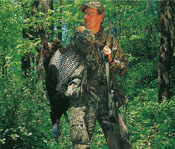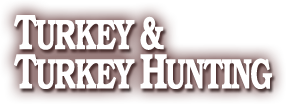 Editor’s note: In this recurring blog, editor Brian Lovett looks back at memorable hunts throughout his career. This occurred in 1998.
Editor’s note: In this recurring blog, editor Brian Lovett looks back at memorable hunts throughout his career. This occurred in 1998.As a relatively young turkey hunter, I was still pretty anxious to join a lot of figurative clubs. I hadn’t yet taken a grand slam or royal slam, and I was hot on that idea. And I’d only killed gobblers in a handful of states to that point and sought to broaden my resume.
But there was one club I had no desire to join … until it happened.
In early May, I traveled to southeastern Minnesota to hunt with my good buddy Scott Bestul. Our mutual friend Pat Reeve — then a free-lance videographer and not yet today’s outdoor television superstar — would film the hunt.
The first day passed with little action, but the second day was different. We came close to killing a henned-up gobbler off the roost but ultimately failed. After enduring a brief rainstorm, we returned to the morning setup to try the longbeard again. I sat against a box elder, and Bestul sat to my right, with Reeve hidden behind us to film. We yelped and cutt here and there for a few minutes until a gobble interrupted us. Before I could whisper something to Bestul, two gobblers and some hens walked out of the woods and into the meadow before us. The strutter walked slowly to the right and, after a tense moment or two, stopped and craned his neck high. Then I missed him, sending turkeys flying everywhere.
No big deal. I’d missed a turkey or two before. I’d even missed one on film before. This was not new. We just had to find another willing gobbler before the noon closure.
Unbelievably, we did, locating a pepper-hot longbeard in a chisel-plowed field. The bird gobbled at every yelp we threw out but wouldn’t approach closer. Knowing we didn’t have much time, Reeve and I slipped along a tree line to within 65 steps of the bird. As we set up, a gang of jakes charged the gobbler, and a fight ensued. Then, as if he were following a script, the bird walked slowly past us at 40 steps. I checked with Reeve to make sure he had everything in his viewfinder and then prepared to shoot.
And then I missed again. In disbelief, I watched the longbeard pump its wings to safety and sail into a deep timbered ravine. I sprinted to look for the bird, still in denial, but of course found no trace of it. It was a clean whiff — my second of the day. On film. Yep, I’d joined an elite group.
Beaten and humiliated, I trudged back toward Bestul and Reeve, retrieving my shotgun along the way. They were conciliatory and tried to boost my spirits. And it helped … sort of.
Reeve returned home that day, probably figuring the idiot he was filming had no chance of shooting a gobbler. The next morning, Bestul and I hit a new property and split up. Roost gobbling was pretty good, and soon after flydown, I heard a shot from Bestul’s direction. He’d almost been run over by a breeding flock of turkeys and had killed a fine gobbler. I congratulated him and silently wallowed in self-pity.
Figuring the shot had boogered the other turkeys, we decided to find another place to hunt. But on our walk back to the truck, Bestul caught a glimpse of a gobbler in a small pasture.
“Get down,” he whispered. “He’s right there, maybe 35 yards from the fence. If you crawl up to the edge, he’ll be in range.”
So crawl I did, and five minutes later, I was at the edge of the pasture. Drumming told me the bird was close, but I couldn’t see the turkey yet. Then movement to my left betrayed the bird. Apparently, as I’d slipped toward the fence, the gobbler had strutted, coincidentally, toward me. When I saw him, he was nine steps away, glaring directly at me.
My gun was ready, so all I had to do was ease it toward the bird’s head and shoot. However, I was using a fairly new style of red-dot scope — one that I quickly learned didn’t perform very well in bright sunlight. As I eased the dot toward the gobbler’s wattles, it disappeared. I was in panic and hesitated, not wanting to miss another gobbler with an errant shot.
By that time, the bird was getting antsy and turned to leave. With about a second to spare, I eased the scope away from the turkey’s neck, reacquired the dog, moved it back on target and prepared for the consequences. This time, I barely made out the dot against the turkey’s neck and fired.
The gobbler disappeared, and for a second, I wondered whether I’d become a three-time loser. Then, however, loud flopping told me I’d somehow saved the trip.
Bestul arrived, and we celebrated. He congratulated me on a great hunt. I was just happy that I hadn’t blown my third golden opportunity in two days. Either way, the bird was one to remember; a heavy-bodied 3-year-old with a paint-brush beard and 1-inch-plus spurs.
As we walked out of the woods that day, Bestul and I made plans for a late-season Wisconsin turkey hunt later that spring. “Sure,” I thought. “What could go wrong?”

